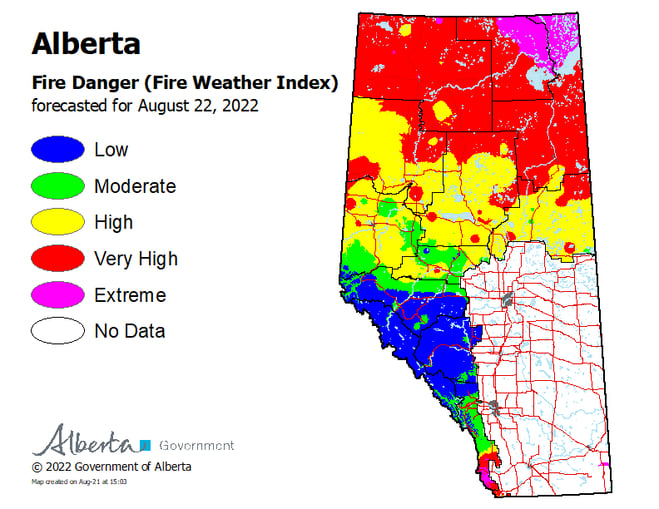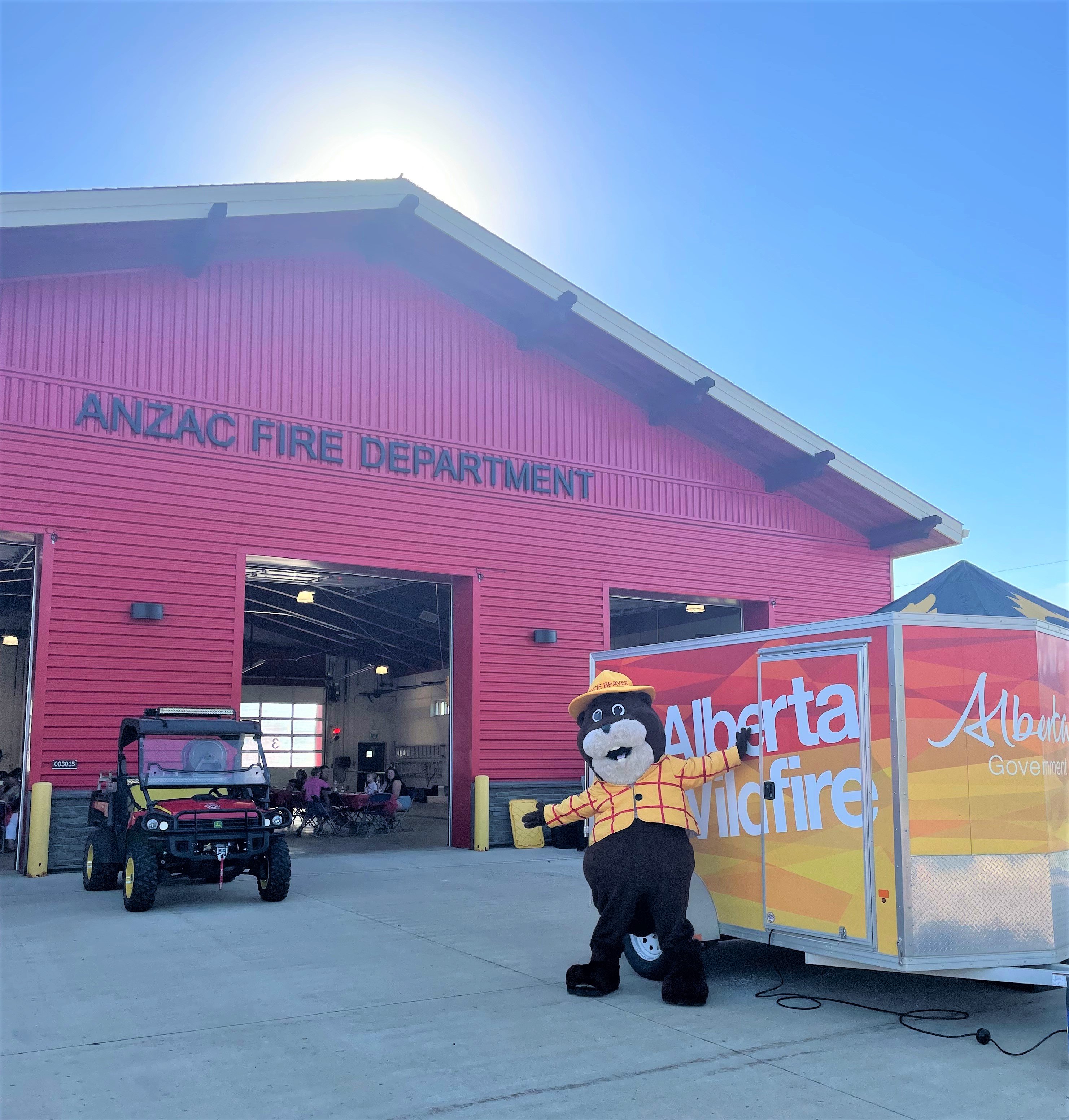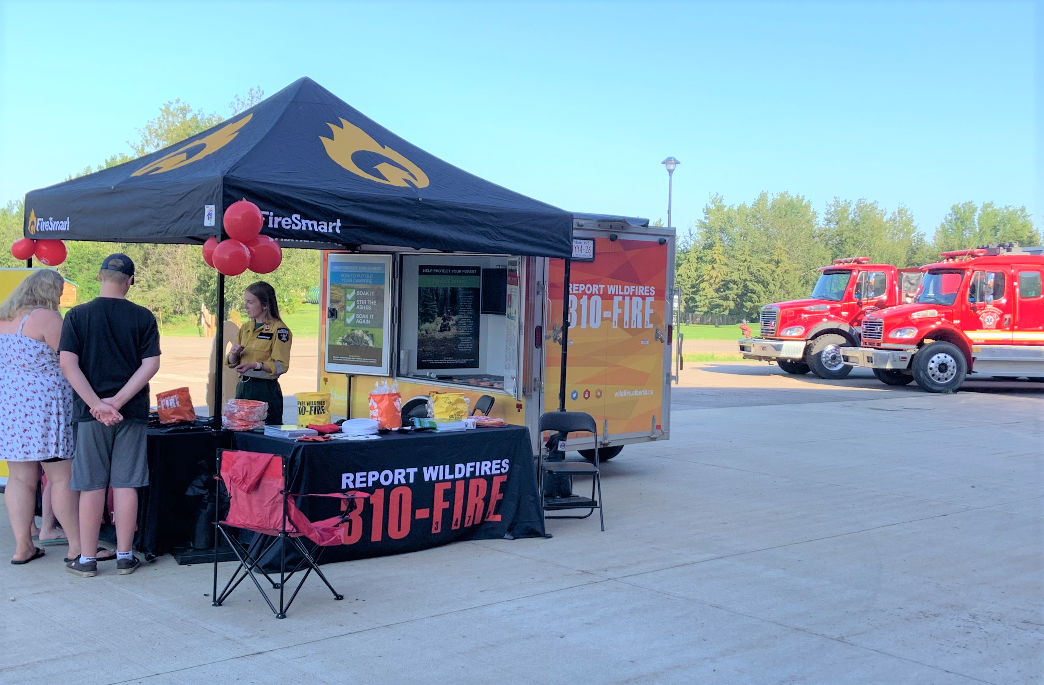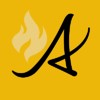
The fire danger in the Fort McMurray Forest Area is overall VERY HIGH.
Please use caution when working or recreating in the outdoors. Always ensure you fully extinguish your campfire and if you see smoke or flame in the forest, call 310-FIRE (3473).

Tomorrow's forecasted map of the fire danger throughout Alberta (August 20, 2022).
NEW WILDFIRE STARTS IN THE LAST 24 HOURS
A lightning storm that came through the area yesterday afternoon produced six new wildfires. One of these wildfires has been extinguished and the other five are classified as being held.
FORT MCMURRAY WILDFIRE UPDATE
Since January 1, 2022, there have been 84 wildfires in the Fort McMurray Forest Area, burning a total of 97,115.37 ha. There are currently 20 active wildfires in the Fort McMurray Forest Area. One is classified as out of control, the other 19 are classified as being held:
MWF076 was detected August 19 and is located 16 km northeast of the Firebag Facility. It is currently estimated to be 60 hectares (ha) and is classified as out of control. Currently, there are two firefighting crews and three helicopters working on this fire. This wildfire was caused by lightning.
MWF077 was detected yesterday and is located in the wildfire management zone, meaning there are no values at risk. It is currently estimated to be 146 ha in size and is classified as being held. This wildfire was caused by lightning.
MWF015 was detected on June 12 and located 24 km southeast of Fort Fitzgerald, 45 km southeast of Fort Smith and 115 km north of Fort Chipewyan. It is currently estimated to be 3,162 ha in size and classified as being held. This wildfire was caused by lightning.
MWF018 was detected on June 13 and is located 28 km southeast of Fort Fitzgerald, 43 km southeast of Fort Smith and 90 km north of Fort Chipewyan. It is currently estimated to be 2,942 ha in size and classified as being held. This wildfire was caused by lightning.
MWF022 was detected on June 13 and is located 58 km southeast of Fort Fitzgerald and 62 km northeast of Fort Chipewyan. It is currently estimated to be 24,920 ha in size and classified as being held. This wildfire was caused by lightning.
MWF025 was detected on June 14 and is located 30 kilometers east of Fort McMurray. It is currently estimated to be 1,554 ha in size and is classified as being held. The wildfire is moving east and away from the city of Fort McMurray. This wildfire was caused by lightning.
MWF031 was detected on June 25 and is located 21 km north of Fort Chipewyan. The wildfire is estimated to be 45,280 ha in size and was caused by lightning. The south end of the fire from the Roche River past the east side of Flett Lake is now controlled from ongoing suppression efforts. Although still classified as being held, this wildfire is not anticipated to threaten any community or surrounding cabins from this point forward.
MWF032 was detected on June 26 and is located nine kilometers east of Gypsy Lake. It is currently estimated to be 6,476 ha in size and is classified as being held. This wildfire was caused by lightning.
MWF033 was detected on June 30 and is located 30 km southwest of Fort Fitzgerald and 110 km north of Fort Chipewyan. It is currently estimated to be 1,863 ha in size and classified as being held. The fire has reached the west side of Leland Lake. This wildfire was caused by lightning.
MWF034 was detected on June 30 and is located 50 km southeast of Fort Fitzgerald and 90 km north of Fort Chipewyan. It is currently estimated to be 1,301 ha in size and classified as being held. This wildfire was caused by lightning.
MWF074 was detected on August 17 and is located 11 km south of the Northwest Territories border and 16 km west from the Saskatchewan border. It is currently estimated to be 1333 ha in size and is classified as being held. This wildfire was caused by lightning.
Since these wildfires are located in remote areas where they do not threaten communities or resources, we allow the wildfires to play out their natural role onto the landscape under the watchful eye of experienced fire managers. Using this wildfire management strategy has many benefits. It re-introduces fire onto the landscape, creates a break in the continuous fuels, reduces the intensity of the fire, provides safety zones for our firefighting crews to work from and reduces the cost of fighting these wildfires.
These wildfires are actively monitored by firefighters on a regular basis and do not threaten any communities at this time.
To learn more about the classification of wildfires, please click here.
To view a map of all the wildfires in the area north of Lake Athabasca, click here.
To view the wildfires on a map, check out the wildfire dashboard. It provides up-to-date wildfire information at the click of a button. This interactive tool displays important statistics on the number of active wildfires in the province, sizes, locations, suspected causes and more.
PROVINCIAL WILDFIRE UPDATE
Since January 1, 2022 in the Forest Protection Area, there have been 896 wildfires burning a total of 115,848.6 ha.

Bertie Beaver attended the Pancake Breakfast hosted by the Anzac Volunteer Fire Department (August 20, 2022).

Alberta Wildfire staff gave out wildfire information and SWAG to the community of Anzac (August 20, 2022).
SMOKE
To view the Air Quality Health Index for your location, visit the interactive map by clicking here. Visit firesmoke.ca to view the smoke forecast and see where the smoke is coming from.
If you have smoke related concerns, we recommend that you visit the Alberta Health FAQs on wildfire smoke by clicking here.
CAMPFIRE SAFETY
Having a campfire? Here are some tips to keep in mind to ensure a safe and enjoyable campfire experience:
Select your site:
-In campgrounds or recreational areas, use the designated stoves, rings, or fire pits. They are designed to keep fires from spreading and are the best choice for a safe campfire.-When outside of a campground, use sites that are clear of dry grass, bushes, leaves, branches, tree trunks, peat moss, and overhanging branches. If the site has already been used for a campfire, use the same site.
-Build your campfires on level ground that is sheltered from wind.
-If you can’t build your fire near a water source, have a large container of water nearby to keep your campfire under control. When you are done, fully extinguish it by soaking it, stirring it, and soaking it again.
Extinguish your campfire:
Soak It. Stir It. Soak It Again.
-Let the fire burn down before you plan on putting it out. Spread the embers within the fire pit, then add water or loose dirt, and stir.
-Expose any material still burning. Add more water and stir again until you can no longer see smoke or steam. Do not bury your fire as the embers may continue to smoulder and can re-emerge as a wildfire.
-Repeat until your campfire is cool to the touch.
-If your fire is out, you should not be able to feel any heat from the ashes.
For more information on campfire safety, click here.
REQUEST A FIRE PERMIT
Wildfire season in Alberta is from March 1 until October 31. During wildfire season, you are required to have a fire permit if you plan on burning in the Forest Protection Area, with the exception of a campfire.
To request a free fire permit online, visit the new portal. You will need a MyAlberta Digital ID to access the portal. Please note that you can still request your permit from the Fort McMurray forest office by calling 780-743-7125.
For more information regarding fire permits, you can view our video by clicking here.
.png?width=658&name=WF_Social-images%20(1).png)
CONTACT
RELATED INFORMATION
Websites:
Social Media:
Apps:
